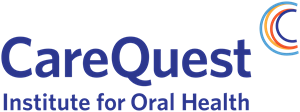From Becker’s Leadership & Management
President Joe Biden and former President Donald Trump spent a small portion of their 90-minute presidential debate June 27 highlighting issues affecting healthcare leaders, from prescription drug costs to the opioid crisis.
The candidates spent relatively little time discussing healthcare issues or policies to reduce costs, which voters have indicated as a key election issue.
Here are four key healthcare takeaways from the debate, which aired on CNN, with context:
Prescription drug costs: The cost of prescription drugs — which nearly 40% of Americans struggle to afford — came up briefly in the first question of the evening when candidates were asked about the state of the economy and inflation.
The two sparred briefly over who is responsible for lowering the cost of insulin. After Mr. Biden touted capping insulin costs at $35 per month as a win for his administration, Mr. Trump argued he was the one that brought down insulin costs for seniors.
CBS News broke down the claims in a fact check: In 2020, during Mr. Trump’s presidency, Medicare created a voluntary program in which some health plans and insulin manufacturers agreed to cap out-of-pocket costs at $35 per month. By the end of 2021, about half of Medicare Advantage or stand-alone prescription medication plans were participating. When Mr. Biden signed the Inflation Reduction Act into law, insulin costs were capped at $35 per month for Medicare beneficiaries, ending the voluntary program.
In February, drugmakers were selected to begin price negotiations with CMS for 10 of the most expensive drugs in the U.S. Under the Inflation Reduction Act, Medicare Parts B and D have negotiation powers that will apply to the price of a limited number of drugs with no generic or biosimilar competition. Lower prices for the first 10 drugs are slated to take effect in 2026.
Medicare is limited to negotiating prices for 20 drugs per year, though Mr. Biden has said he will work with Congress in a bid to boost those negotiation powers to 50 drugs if he is re-elected.
During the debate, Mr. Trump did not comment directly on the Inflation Reduction Act. He has previously criticized the legislation and said his administration would look to dismantle many of the law’s provisions if he returns to the White House. While speaking at Milken Institute’s Future of Health Summit last fall, Alex Azar, who served as HHS secretary under the Trump administration, criticized Medicare’s drug pricing negotiation powers, citing concerns about stifled innovation and delays in bringing new drugs to the market.
Abortion: The candidates spent around 10 minutes on the topic of abortion, with Mr. Trump reinforcing his view that the legality of abortion belongs in the hands of states to decide, and Mr. Biden vowing to restore the federal right to abortion if reelected.
In June 2022, the Supreme Court overturned Roe v. Wade. Since then, 14 states have enacted a total abortion ban and seven states have gestational limits of 18 weeks or less in place, according to a tracker by the Guttmacher Institute. Mr. Trump said he supports exceptions for “rape, incest and the life of the mother,” and Mr. Biden said he believes decisions about care should be left to physicians.
The Biden administration issued guidance to hospitals following the overturn of Roe v. Wade to clarify that abortion is covered under the Emergency Medical Treatment and Labor Act. The decades-old federal law — which requires hospitals to provide all patients appropriate emergency care, including a medical screening examination and stabilizing treatment, if necessary — has been at the center of legal disputes over whether it preempts state law where abortion is prohibited and does not make exceptions for the health or life of a pregnant person.
Most abortion bans include some kind of exceptions for emergencies, though language in many cases is vague, leaving physicians uncertain of the circumstances in which they should perform the procedures. Lawyers and hospital administrators have said the Biden administration’s focus on EMTALA has done little to clarify guidance for healthcare providers, who feel stuck between the repercussions they face if they violate their state laws and complying with federal law.
Hours before the debate June 27, the Supreme Court ruled in favor of permitting emergency abortions in Idaho — for now. The justices did not settle the larger question of whether EMTALA covers abortions when deemed necessary by physicians to protect the health of a pregnant woman, only that abortions in emergency cases may resume temporarily in Idaho. The case now returns to the U.S. Court of Appeals for the 9th Circuit.
“This is not a victory, it’s a delay,” Nisha Verma, MD, an OB-GYN who works at a hospital in Georgia and often treats women with high-risk pregnancy complications, told The Washington Post in response to the Idaho ruling. “With all this back-and-forth, we aren’t just able to practice medicine. … We have to analyze what the court is saying, which leaves us with more uncertainty.”
Earlier this month, the Supreme Court ruled in favor of the FDA when it upheld the approval of mifepristone, a drug used in about two-thirds of all abortions. When asked whether he would block abortion medication, Mr. Trump said he agrees with the court’s recent decision and that he, “will not block it.”
Medicare: Medicare came up roughly 12 minutes into the debate, including its future under their policy aims.
Mr. Trump made the statement that Mr. Biden’s administration is “destroying Medicare because [undocumented immigrants] are coming in, they’re putting them on Medicare. They’re putting them on Social Security. They’re going to destroy Social Security.”
The Washington Post addressed the claims in a fact check, noting the payroll taxes paid by undocumented immigrants. The Post roughly calculated Social Security payments made by undocumented immigrants at about $27 billion per year recently.
“For Medicare, it should be at least $6 billion, as the Medicare tax is about 23% of the Social Security tax,” the fact check said.
Mr. Biden also accused Mr. Trump of trying to enact cuts to Medicare.
“He wants to get rid of Social Security; he thinks that there’s plenty to cut in Social Security. He’s wanting to cut Social Security and Medicare,” Mr. Biden said, according to CNN.
The New York Times fact checked this claim, noting that Mr. Trump, while previously suggesting he may be open to cuts, has repeatedly pledged to protect Social Security and Medicare.
Medicare’s hospital insurance trust fund is projected to reach insolvency in 2036.
Opioid crisis: Toward the end of the debate, the candidates were asked about the opioid overdose epidemic. According to provisional data from the CDC, there were more than 93,000 overdose deaths in 2020, an increase of more than 30% from the year prior. Overdose deaths remained near record highs in 2023 despite a slight 3% year-over-year decline, the first decrease in five years, according to preliminary CDC data.
Within the opioid class, fentanyl’s potency and increasing presence in the illicit drug market have made it a significant factor in the overdose epidemic. The highly potent synthetic opioid has been a primary driver in the rise of drug-related deaths in recent years. From 2015 to 2022, synthetic opioids, mainly fentanyl, were the leading cause of overdose deaths, increasing more than 7.5 times, according to data from the National Institutes of Health.
Mr. Trump and Mr. Biden were prompted to answer the question: What will you do to help Americans right now in the throes of addiction, who are struggling to get the treatment they need? In asking the question, CNN’s Jake Tapper noted that overdose deaths rose under both of their presidencies.
In his response, Mr. Trump said the country had been making progress in combating drug addiction, and pointed to the COVID-19 pandemic as disrupting progress. He also referenced equipment and drug-detecting dogs at the border.
Mr. Biden said the U.S. needs more machinery at the border that can detect fentanyl and more agents. He added that the U.S. is “coming down very hard in every country in Asia in terms of precursors for fentanyl.”
Neither candidate offered a direct answer on how they will improve access to treatment for those struggling with addiction.





